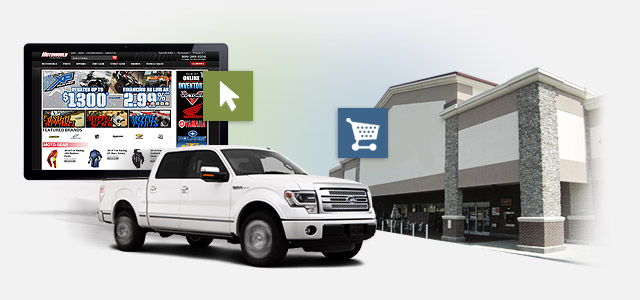Revving Up Your Ride: Navigating the World of Automotive Retail
Are you ready to rev up your ride and dive into the exciting world of automotive retail? Whether you’re in the market for a sleek new sports car or simply looking for some handy advice on how to navigate the vast landscape of automotive sales, we’ve got you covered. Welcome to our comprehensive guide, designed to provide you with all the information you need to make informed decisions and ensure a smooth journey through the realm of automotive retail.
From shopping for a brand new vehicle to exploring the pre-owned market, automotive retail offers a diverse range of options for all types of buyers. But with so many choices available and various factors to consider, it can quickly become overwhelming. That’s where we come in. Our goal is to serve as your trusted companion, providing valuable insights and expert tips to help steer you in the right direction. So buckle up and get ready to accelerate your automotive knowledge as we embark on this exciting adventure together. Let’s navigate the world of automotive retail and rev up our ride to a new level of confidence and satisfaction.
Understanding the Automotive Retail Landscape
In the world of automotive retail, there is a dynamic and ever-evolving landscape filled with endless possibilities. Whether you are a first-time buyer or a seasoned car enthusiast, navigating this landscape can sometimes feel overwhelming. However, with the right knowledge and information, you can confidently maneuver through the automotive retail market.
When venturing into the realm of automotive retail, it is crucial to understand the various options available to you. From traditional brick-and-mortar dealerships to online platforms, the choices can seem limitless. Each avenue offers its own advantages and considerations, making it important to weigh your preferences and requirements carefully.
Automotive retail is not just about purchasing a vehicle; it encompasses the entire customer experience. From browsing and researching different models to negotiating prices and finalizing paperwork, every step plays a vital role in achieving a satisfying buying journey. By familiarizing yourself with the processes involved, you can make informed decisions and ensure a smoother overall experience.
In this guide, we will provide you with valuable insights and information to help navigate the world of automotive retail efficiently. Whether you are seeking tips on finding the right dealership, understanding financing options, or even considering alternative methods of vehicle acquisition, our aim is to equip you with the knowledge you need to make confident decisions.
Remember, automotive retail may be a complex landscape, but with the right guidance and awareness, you can rev up your ride and drive toward a successful car-buying experience. Stay tuned as we delve deeper into the different facets of automotive retail, providing you with the tools you need to make informed choices in this exciting journey.
Key Factors to Consider in Automotive Retail
In the world of automotive retail, there are several key factors that individuals should consider before making a purchase. These factors can greatly impact the overall experience and satisfaction with your new ride. Here are three important aspects to keep in mind:
-
Budget and Affordability: One of the most significant factors to consider when delving into automotive retail is your budget. Determining how much you are willing and able to spend on a vehicle will help narrow down your options and prevent you from overspending. Assessing your financial situation and considering factors such as the down payment, monthly payments, and maintenance costs will ensure that you find a vehicle that fits comfortably within your budget.
-
Vehicle Type and Purpose: Another crucial factor to consider is the type of vehicle that aligns with your needs and preferences. Are you looking for a compact car for city driving, a spacious SUV for family outings, or a powerful pickup truck for work purposes? Understanding your lifestyle, priorities, and the purpose of your vehicle will dictate the type and features that are essential for you. Researching different vehicle models, their fuel efficiency, safety ratings, and potential for customization can assist you in making an informed decision.
-
Reliability and Resale Value: When investing in a vehicle, it is important to consider its long-term reliability and potential resale value. A reliable vehicle will provide you with peace of mind, knowing that it will perform well and require minimal repairs in the future. Additionally, considering the resale value can be advantageous if you plan on selling or trading in your vehicle at a later stage. Researching the track record of different car manufacturers, analyzing consumer reviews, and consulting reputable sources can offer insights into the reliability and value retention of various vehicle models.

By acknowledging these key factors – budget and affordability, vehicle type and purpose, and reliability and resale value – you can navigate the world of automotive retail with confidence. Taking the time to evaluate and prioritize these aspects will ultimately lead you to a satisfying automotive purchase that suits your lifestyle and preferences.
Making the Most of Your Automotive Retail Experience
When it comes to automotive retail, there are a few key strategies that can help you make the most out of your experience. First and foremost, do your research. Before stepping foot into a dealership, take the time to educate yourself about the specific make and model you are interested in. Familiarize yourself with the features, pricing, and any potential discounts or promotions. This knowledge will give you an advantage in negotiations and ensure you are making an informed decision.
Secondly, don’t rush the process. Purchasing a vehicle is a significant investment, so take the time to shop around and explore various options. Visit multiple dealerships, test drive different cars, and compare prices. This will not only give you a better understanding of what’s available in the market but also allow you to find the best deal possible.
Lastly, don’t be afraid to negotiate. Automotive retail is a competitive industry, and dealerships are often willing to negotiate on price and terms. Be prepared to haggle and consider getting pre-approved for financing before visiting a dealership. This will give you more leverage when it comes to negotiating the financing terms.
By following these strategies, you can ensure that you make the most out of your automotive retail experience. From conducting thorough research to taking your time and being proactive in negotiations, these tips will help you navigate the world of automotive retail with confidence and get the best deal possible.







